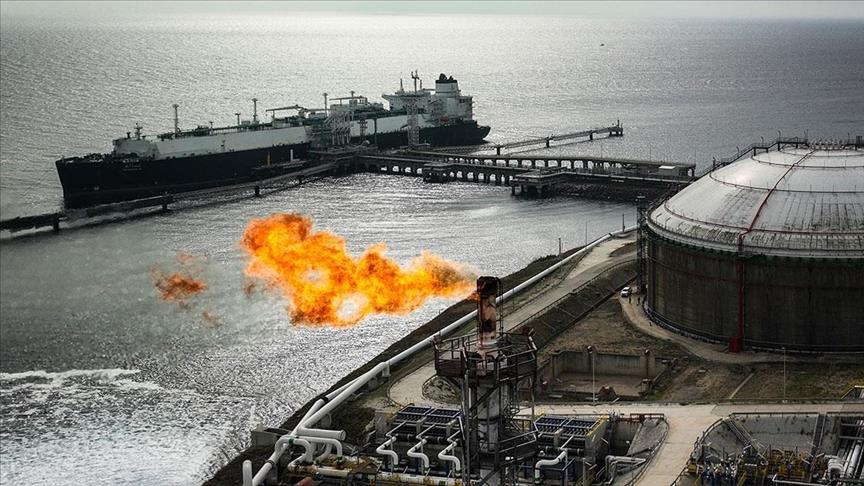A total of 192 regasification terminals, with an annual capacity of 1.14 billion tons as of May this year, along with 80 liquefaction terminals with a capacity of 481 million tons, serve the global liquefied natural gas (LNG) market.
Information compiled by Anadolu from the International Association of LNG Importers (GIIGNL) report shows that LNG imports increased by 8 million tons on an annual basis to 401 million tons.
A total of 48 countries imported LNG, while only 20 countries were responsible for LNG exports. Asia topped the list, holding the biggest share of total demand at 65%, while 35% of all trade was realized on spot markets rather than long-term contracts.
With a total annual regasification capacity of 226 million tons, the report lists the terminal locations in the Americas as follows: one each in Canada, Colombia, the Dominican Republic, El Salvador, and Panama; two each in Argentina, Chile, Jamaica, and Puerto Rico; three in Mexico; eight in Brazil; and ten in the US.
In Asia, there is one terminal each in Hong Kong, Myanmar, Singapore, and Vietnam; two in Bangladesh, Malaysia, Pakistan, the Philippines, Taiwan, and Thailand; seven in India and Indonesia; eight in South Korea; 27 in China; and 36 in Japan, with a combined annual regasification capacity of 649 million tons.
In Europe, a total annual capacity of 235.4 million tons is regasified at 56 terminals across the continent, including Türkiye. Belgium, Croatia, Gibraltar, Malta, Poland, Portugal, and Russia each have one regasification terminal. Norway, Lithuania, and Greece have two each, while the Netherlands, Finland, and Germany have three each, and the UK has four. Türkiye, Italy and France each have five, and Spain has eight.
The Middle East has a combined yearly capacity of 52.9 million tons, distributed throughout terminals in Kuwait and the United Arab Emirates, where each country has two, while Bahrain, Egypt, Israel, and Jordan have one each.
Accordingly, regasification capacity worldwide is estimated at 1.14 billion tons distributed across 192 facilities as of May 2024, some of which are floating LNG storage facilities and others are onshore facilities, with start-up years varying between 1969 and 2024.
Some of these terminals also have road transport facilities for gas distribution as well as cooling and refueling infrastructure.
– The US leads in liquefaction capacity
A total of 481 million tons of natural gas can be liquefied annually and sent to other regions by countries that have terminals for this purpose.
Liquefaction facilities can be found in Angola, Cameroon, the Congo, Equatorial Guinea, the United Arab Emirates, Brunei, Mexico, Mozambique, Papua New Guinea and Peru. Norway and Oman have two each; Egypt, Trinidad and Tobago have three each; Russia, Algeria, Nigeria and Indonesia have four each; Malaysia has five; Qatar has 11, Australia has 12 and the US has 16. Accordingly, a total of 80 liquefaction terminals are in service.
The number of LNG tankers operating in the global LNG market totals 772.
– Algeria becomes Türkiye’s largest LNG supplier
Türkiye’s LNG imports contracted by 600,000 tons to 10.1 million tons last year, down 600,000 tons from the previous year, due to falling household gas consumption, mild winter temperatures, and the Kahramanmaras-based earthquakes, which were described as the ‘disaster of the century.’
Last year, Algeria was Türkiye’s largest LNG supplier, with a 42% share. The US followed but its market share dropped from 37% in 2022 to 28% last year. Russia and Egypt contributed 11% and 9%, respectively, of Türkiye’s LNG needs.
The decline in the amount of natural gas purchased from Egypt was offset by LNG purchased from Algeria.
Even though Türkiye commissioned a new Floating LNG Storage and Regasification Unit (FSRU) in Saros last year, the report said that despite this development, LNG imports in Türkiye declined slightly by 600,000 tons to 10.1 million tons in 2023.

